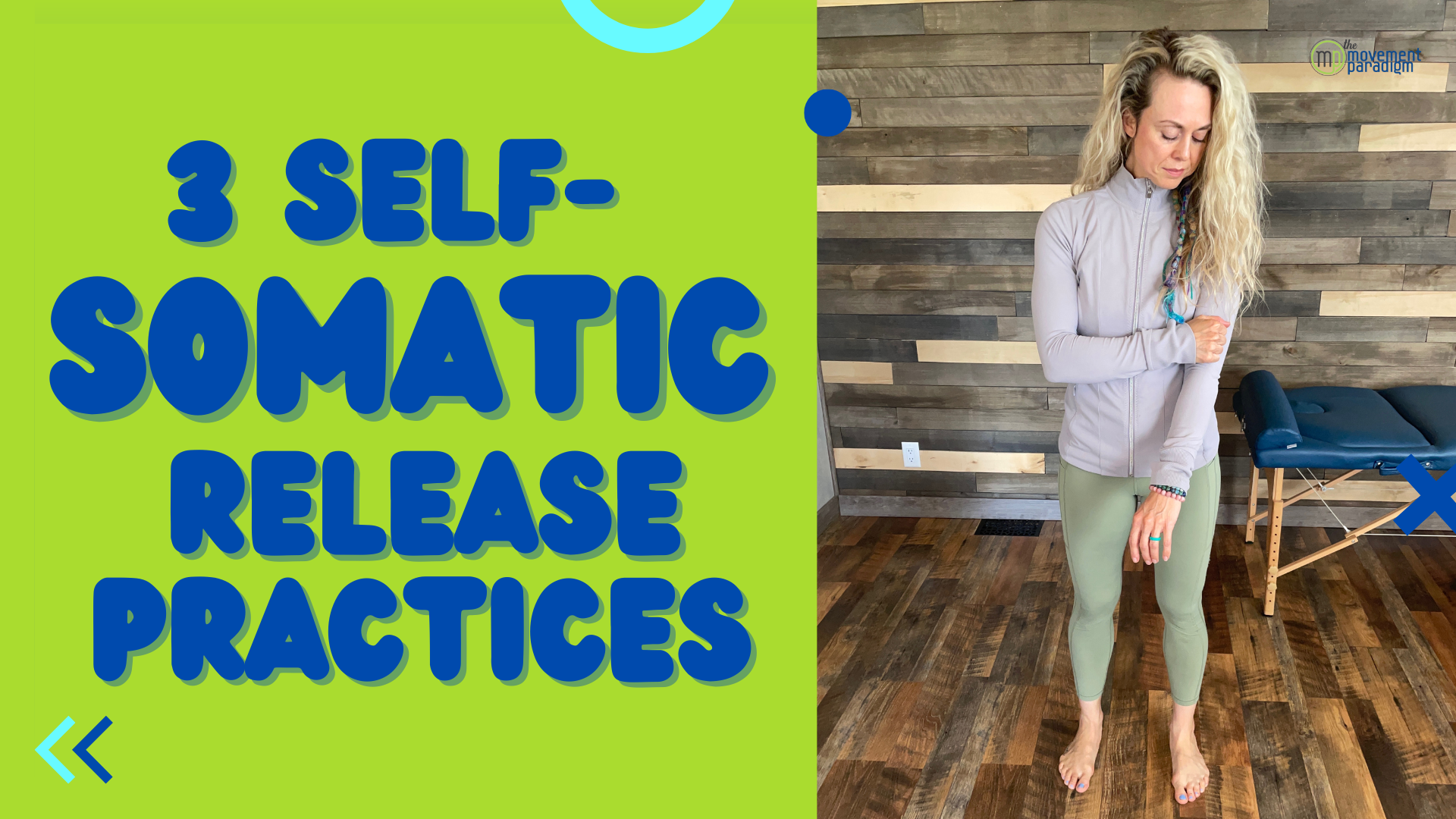Discover a transformative journey as we guide you through three powerful somatic exercises designed to help you break free from mental chatter and reconnect with your body’s wisdom. Whether you’re seeking stress relief, mindfulness, or simply a deeper sense of presence, these exercises are your gateway.
Join us as we explore gentle movements, breath awareness, and mindful stretches that will anchor you to the present moment.
Rather watch or listen?
What You Need To Know About Somatic Experiencing
As you may have observed in some of my other videos, when we talk about somatic experiencing or somatic therapy, we’re considering a bodily approach to emotional and mental health. In the realm of mental health, we often tend to think of a top-down approach, such as cognitive-based methods that involve trying to rationalize or talk ourselves out of our emotions. However, what our bodies are very accustomed to evolutionarily is non-verbal communication – about 93% of our communication is non-verbal. Therefore, using movement to address mental health can be incredibly potent. Today, I want to discuss three of my personal favorites.
3 Somatic Exercises
1. Butterfly Hug
If you’re experiencing sadness or feeling down and you’re seeking comfort or soothing, this technique is perfect for you. Begin by interlacing your thumbs, then bring your hands across your chest and let your fingers reach toward your shoulders. Remember, there’s no definitive right or wrong way to do this. Start by allowing yourself to settle in, feeling the comfort and soothing sensation in your arms. When you’re prepared, gently alternate tapping your hands in a rhythmic motion that feels comfortable for you. Do this for as long as you desire.
It’s important to note that this practice can lead to a significant emotional release. If you find yourself becoming emotional or on the verge of tears, that’s perfectly okay and welcome. Allow yourself to embrace those feelings and offer yourself some grace. On the other hand, if the technique simply feels soothing without evoking strong emotions, continue for as long as you find it beneficial.
2. Wipe Away
If you’re feeling a little frustrated and annoyed and just need to vent some emotions, there are a couple of options to consider. One option is to find a comfortable position that suits your body and then imagine wiping away the frustrations. Bend over and ensure your posture is comfortable. As you wipe away, allow any frustrations you’re experiencing to flow through your body. You can increase the intensity of this movement as you become more at ease.
Shaking
Simultaneously, another technique you can try is a simple activity called “shaking.” This idea is reminiscent of how animals in the wild deal with fight-or-flight responses. They literally shake off the stress and return to a state of homeostasis swiftly.
So, if you’re feeling frustrated and want to release some pent-up energy, try shaking your body. Shake as needed, and then give yourself a moment to settle down. Take a moment to connect with yourself and observe the sensations in your body.
3. Goddess
The third one, which is one of my favorites, is the goddess. If you’re male, you can refer to this as something different, but it can be very empowering. Turn your feet out and bring your hands – let’s say, to heart center if you’re into yoga. Inhale as you come down, letting your knees go out, and then exhale, letting your arms go up to the ceiling. Do this at a pace that feels good for you. This is a great technique if you feel like you want to evoke a sense of happiness and empowerment.
We hope you can appreciate these three simple strategies. They show how we can shift our emotions and thoughts by moving and getting into our body physically, feeling our body.
These are just a few examples out of many of how to do that. If you’d like to learn more, please make sure to reach out to us. We would love to help, and as always, thank you so much for joining. Make sure to subscribe to our YouTube channel, The Movement Paradigm, for weekly tips on mindset, nutrition, and movement.
Check out our app, the Movement Paradigm app, for lots of programs and really creating a community of people that want to enhance their lives in all ways and make it accessible to you.
Other things that might interest you:


